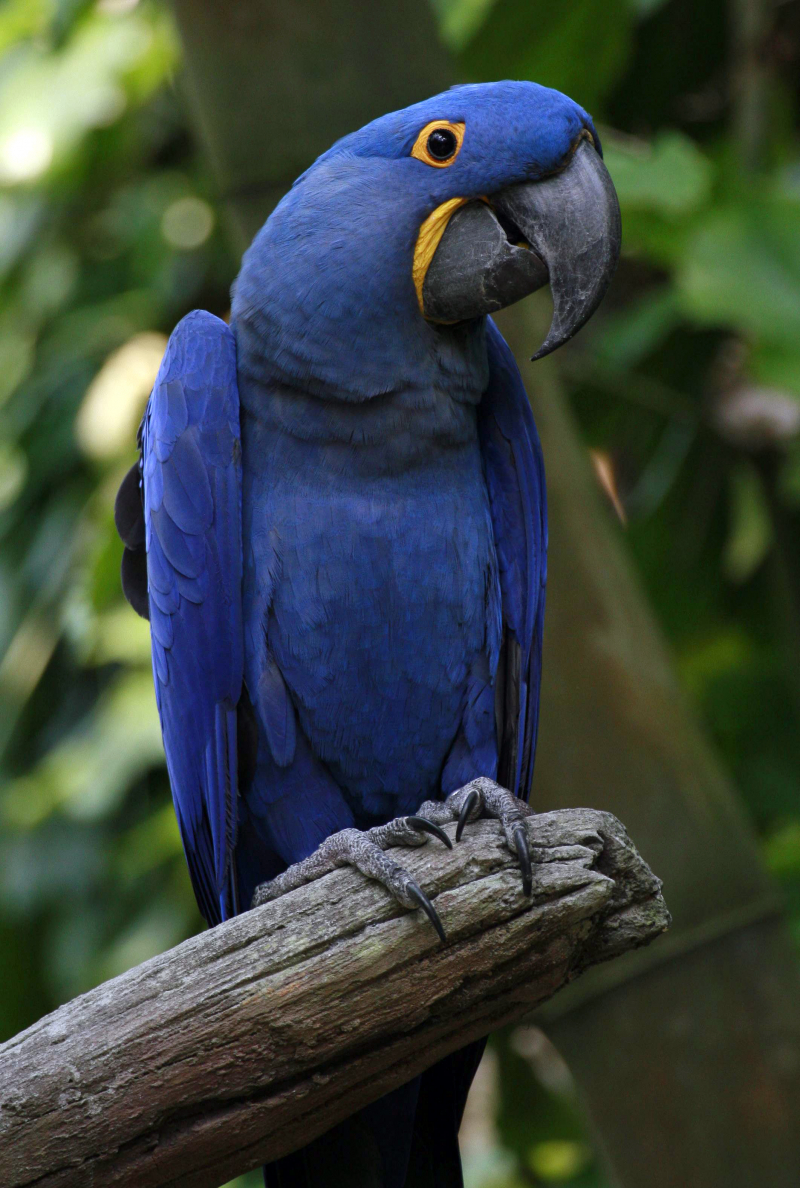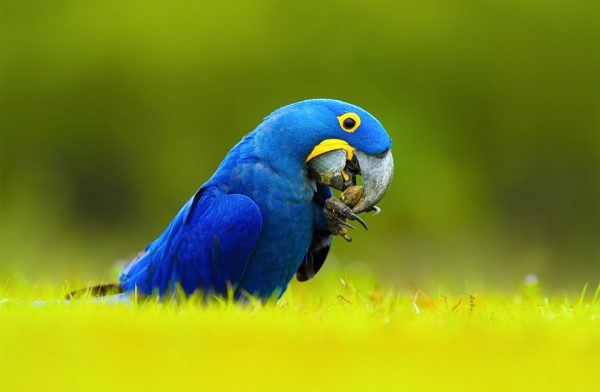Hyacinth Macaw

With a length of 100 cm, the hyacinth macaw is the world's largest species of flying parrot. They can be found in the semi-open areas and savanna grasslands of northern Brazil. Their population has declined in recent years. Currently, there are less than 5000 Hyacinth Macaws left in existence. Hunting and habitat loss are the main threats to hyacinth macaws.
The Hyacinth Macaw is distinguished by its huge size and beautiful azure blue plumage with vivid yellow rings around the eyes. Due to its magnificent hue, the Hyacinth Macaw is also referred to as the "blue Macaw." They also have a sharp, curved black bill and a long, slender tail.
The longest species of parrots are hyacinth macaws. Being referred to as "gentle giants," they are also known to be very even-tempered and occasionally calmer than other macaws. It favors areas that are moderately open and forested. It often stays away from deep, humid forests, and in areas where these habitats are the norm, it is typically limited to the fringe or more open areas. These parrots inhabit a variety of habitats throughout their range, including moriche palm swamps, dry thorn forests known as caatinga, and savannah grasslands. The hyacinth macaw is legally protected in Bolivia and Brazil, and commercial export is prohibited due to its placement in CITES' Appendix I.











